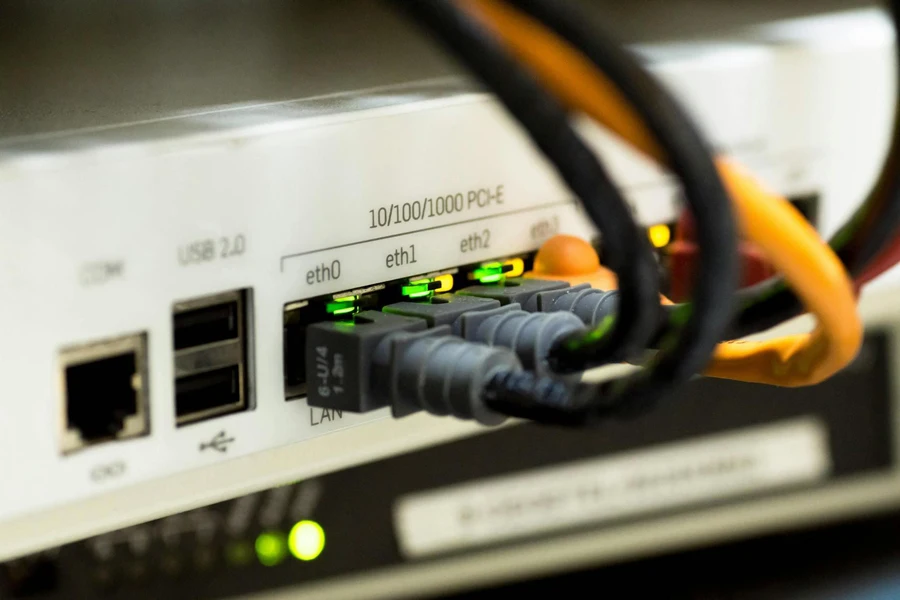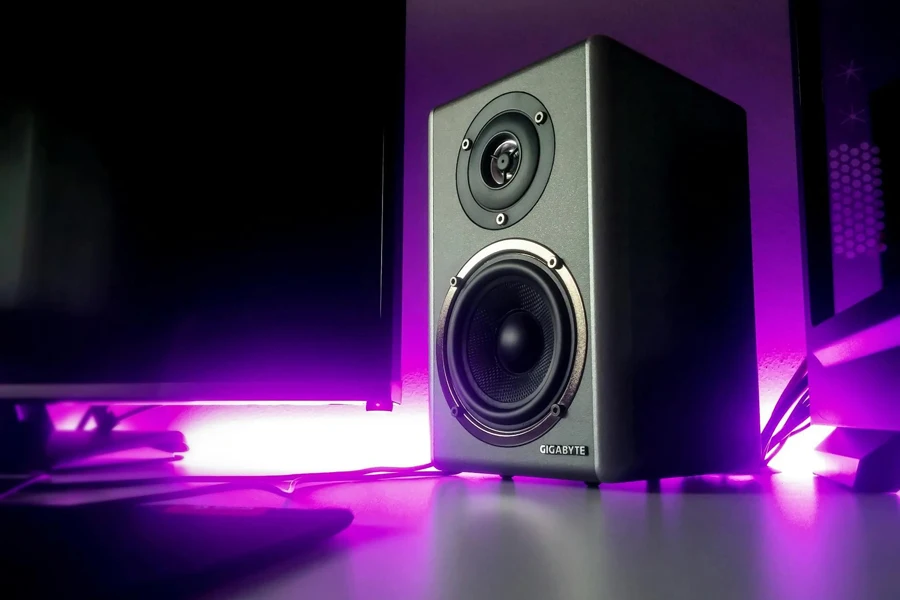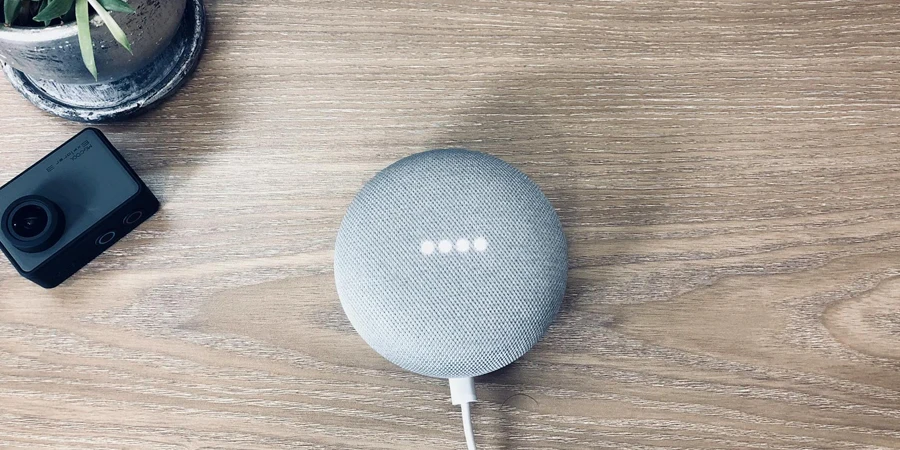Table of Contents
● Introduction
● Market overview
● Things to consider when selecting speaker cables
● Best products and their features
● Conclusion
Introduction
Speaker cables play a pivotal role in the optimization of audio systems, serving as the critical link between amplifiers and speakers. Selecting the right cable is not merely a technicality but a necessity for achieving the best possible sound quality. The choice of gauge, material, and length can dramatically influence the clarity, depth, and overall fidelity of audio playback. Without appropriate attention to these details, even the most sophisticated audio equipment can fail to deliver its full potential. Thus, investing in high-quality speaker cables is essential for both audiophiles and casual listeners aiming to maximize their audio system’s performance.

Market overview
The speaker cable market is on a significant upward trajectory, with the latest projections from Insighters indicating a compound annual growth rate (CAGR) of 6.3% from 2023 to 2030. By the end of this period, the market is expected to reach a valuation of USD 1199.5 million, up from USD 778.2 million in 2023. This growth is driven by the escalating demand for high-quality audio systems in both home and professional settings, reflecting broader consumer trends towards sophisticated audio experiences. Key market players such as Shenzhen Choseal, UGREEN, and BELKIN are capitalizing on these trends by leveraging advanced production technologies and expansive distribution networks. These companies are intensifying competition by focusing on product innovation, especially in enhancing the technical specifications of speaker cables to meet the high fidelity requirements demanded by today’s audiophile market.
Further analysis reveals a significant shift in the market towards the adoption of high-end, durable materials, which promise enhanced performance and longevity—critical factors as consumers increasingly prioritize quality. According to Insighters, there has been a considerable increase in the production and adoption of both analog and digital audio cables, catering to diverse consumer needs and system compatibilities. Manufacturers are focusing on reducing cable resistance and enhancing conductivity, with a strategic aim to minimize signal loss and maximize sound fidelity. This focus on quality improvement is crucial in a market where a minor enhancement in cable technology can lead to noticeable improvements in sound quality. These advancements are part of a broader industry trend towards more versatile, high-performance audio solutions, with the market expansion reflecting a 6.3% CAGR, underscoring a robust demand for superior audio cable products.
Things to consider when selecting speaker cables
Gauge and length
Speaker cable gauge and length are integral to determining the resistance and subsequent audio quality. A lower gauge number indicates a thicker wire, which inherently offers less resistance. As resistance increases with cable length, choosing the correct gauge becomes crucial, especially for longer runs. Cmple notes that for distances exceeding 50 feet, a lower gauge cable is advisable to minimize resistance and maintain sound integrity. Conversely, shorter distances can be managed with higher gauge numbers without compromising audio quality. Thus, the correct balance of gauge and length ensures optimal audio delivery by maintaining the integrity of the signal from the source to the speaker.
Material quality
The conductivity of the material used in speaker cables directly affects their efficiency. Copper is predominantly used due to its excellent balance of low resistance and cost-effectiveness. However, Cambridge Audio suggests that silver, despite its higher cost, has a lower resistance and therefore superior conductivity, which can enhance audio clarity. Gold, while excellent for resistance to oxidation and providing stable connections, is less conductive than copper and silver and is typically used only for connectors rather than the entire cable length. Each material serves distinct purposes and can be selected based on budget, audio system requirements, and personal preference for sound quality.
Impact of resistance on speaker performance
Resistance in speaker cables can significantly affect the performance by influencing the amount of power transmitted to the speakers. Lower resistance translates to more power and clearer sound. According to Sewell Direct, it is crucial to choose a cable gauge that is appropriate for the cable’s length and the speaker’s impedance to avoid excessive resistance that can degrade audio quality. If not properly matched, the resistance can cause a notable loss in power, resulting in sound distortion and an overall decrease in audio performance. Careful consideration of these factors can prevent degradation of sound quality and ensure the audio system performs at its optimal level.
Best practices for cable connection and installation
Effective connection and installation of speaker cables are crucial for achieving the best sound quality. As per Ooberpad, using high-quality connectors like banana plugs or spade connectors not only ensures a more secure and durable connection but also helps in maintaining the audio integrity by preventing any potential short circuits that can arise from loose strands. Ensuring that cables are properly polarized, with positive and negative terminals correctly aligned, is critical to avoid phase issues which can significantly affect the sound. Proper installation not only enhances performance but also extends the lifespan of the audio system by ensuring that all components function efficiently together.
Debunking common speaker cable myths
There are numerous myths in the audio world regarding speaker cables, often perpetuated by marketing strategies that emphasize over-priced or over-engineered products. Cmple tackles the myth that more expensive cables always provide better performance, stating that once basic quality standards are met, there are diminishing returns on spending more. Cambridge Audio further debunks the myth that cables require a break-in period to reach optimal performance, clarifying that there is no scientific basis to this claim. Understanding these myths can help consumers make more informed decisions, focusing on genuine product quality and specifications rather than falling for marketing hype.

Best products and their features
In-depth review of high-quality speaker cables in the market
The speaker cable market offers a diverse range of options tailored to satisfy the varying needs of audiophiles and professional audio setups. Premium speaker cables typically utilize high-purity copper, renowned for its excellent electrical conductivity, which ensures minimal signal loss and superior sound clarity. These cables often feature advanced construction techniques including multiple layers of shielding—consisting of materials like Mylar and aluminum—to protect against electromagnetic and radio frequency interference that can distort sound quality. Furthermore, the physical build of these cables is designed to withstand the rigors of both professional use and home environments, featuring durable outer jackets that resist physical wear and environmental damage. The meticulous design and
the engineering behind these high-end cables make them ideal for users who require flawless audio reproduction and insist on maintaining the integrity of every note and sound in complex audio tracks.
Material quality’s role in speaker cable performance
The choice of material in speaker cable construction is crucial for ensuring optimal performance and durability. Oxygen-free copper is a popular choice for high-end speaker cables due to its low oxidation rate and exceptional electrical conductivity, which helps in maintaining signal integrity over long distances and time. Some manufacturers go a step further by incorporating silver into their designs, either as a plating or through the use of solid silver conductors. Silver has a higher electrical conductivity than copper, which translates to even lower resistance and, therefore, better signal transmission, particularly beneficial in high-resolution audio setups. However, these materials can elevate the cost significantly. Despite the higher price point, the investment is justified for settings where audio quality cannot be compromised, such as in professional recording studios or high-end home audio systems. The superior materials ensure that audio signals are preserved in their most authentic form, without the loss of fidelity or introduction of unwanted noise.
Comparing gauge and connector types for optimal audio quality
The gauge of speaker cables plays a critical role in determining their effectiveness in carrying audio signals. Thicker cables, which have a lower gauge number, inherently have less resistance, making them suitable for longer cable runs typically found in large rooms or professional settings. This reduced resistance helps in maintaining the fidelity of the sound by preventing significant power losses across the cable length. On the connector front, the choice between banana plugs, spade connectors, or bare wire terminations can influence both the ease of connection and the stability of the signal transfer. Banana plugs are highly regarded for their convenience and reliability, offering a plug-and-play solution that provides a firm and stable connection to speaker terminals. Spade connectors, while requiring a bit more effort in setup, offer a larger surface area of contact, which can be beneficial in ensuring a solid, high-quality connection, particularly in setups where the cables are not frequently disconnected or moved.
Tailoring speaker cables to various audio setups
The correct choice of speaker cable can greatly affect the overall performance of different audio systems, whether it’s a compact home setup or a sprawling professional audio environment. In home theaters, for instance, using appropriately gauged cables is crucial for achieving clear and powerful sound across potentially long distances from amplifiers to speakers. In simpler setups, such as a desktop audio system, users might opt for thinner cables that are easier to manage and still provide excellent sound quality. It is also important to consider the aesthetics and practical aspects of cable installation, which can influence the choice of cable type and gauge. In all cases, ensuring that the cable matches the system’s power requirements and setup constraints is key to achieving optimal audio performance without unnecessary expense or installation challenges.
Strategic considerations for selecting the ideal speaker cables
When selecting speaker cables, consumers must consider a multitude of factors to ensure they are enhancing their audio experience in the most effective way. The choice encompasses not only the physical aspects of the cable, such as material, gauge, and connectors but also the specific requirements of the audio system, including the layout of the installation space and the type of audio components used. Additionally, budget considerations play a crucial role; while higher-quality materials like silver offer the best performance, they may not always provide the best value for every setup. By thoroughly assessing their system’s needs against the performance characteristics of different speaker cables, users can make informed decisions that balance cost against the clear, undistorted sound output, ensuring an immersive listening experience tailored to their preferences and audio system capabilities.
Conclusion
Selecting the right speaker cables is critical for achieving optimal performance from both commercial and residential audio systems. High-quality cables are fundamental in maintaining sound integrity, especially in professional environments where audio clarity and fidelity are paramount. Effective speaker cables minimize resistance and preserve the integrity of the audio signal across extensive setups, crucial for settings where every detail in sound reproduction counts. These cables also prevent signal loss over distances, which is vital for maintaining the quality of sound in larger spaces. Additionally, well-designed speaker cables offer robust protection against electromagnetic interference, ensuring that audio remains pure and uncontaminated, even in technologically dense environments packed with electronic devices. This characteristic is particularly important in professional settings like recording studios or concert venues, where multiple electronic devices operate simultaneously. High-end cables designed with multiple layers of shielding and specialized insulation materials can significantly reduce the risk of cross-talk between cables and other electronic interference, thereby enhancing the overall audio experience.
When selecting speaker cables for professional use, it is imperative to consider both the technical specifications and the specific requirements of the audio setup. Technical factors such as the gauge of the cable, the materials used, and the types of connectors play critical roles in determining how well the cable will perform under various conditions. For instance, cables with a lower gauge number are thicker and, therefore, better suited for longer runs as they exhibit lower resistance, which helps in maintaining sound quality over distance. The choice of cable material—such as oxygen-free copper or silver—greatly influences conductivity and the ability to preserve the audio signal without degradation. Silver, although more expensive, provides the lowest resistance and the highest conductivity, making it ideal for high-end audio applications where clarity and detail are crucial. Moreover, the selection of connectors is equally important; robust connectors like banana plugs and spade connectors provide a secure and reliable connection, crucial for setups where cables must be frequently connected and disconnected. Additionally, these connectors are designed to minimize contact resistance, further ensuring that the audio signal remains strong and uninterrupted.




